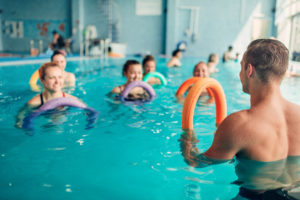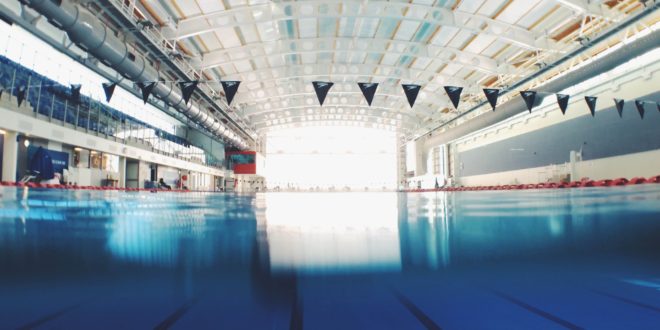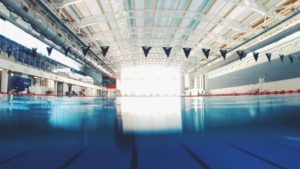Looking for fun, fresh exercise ideas to spice up your workout routine? If you’re tired of yoga or perhaps rehabbing a knee injury, an activity like aqua jogging could be just what you need. Don’t miss this quick guide to aqua jogging – discover what it is, what benefits it offers older adults, and how to get started.
What is aqua jogging?
Exactly what it sounds like, aqua jogging is literally jogging in water. Used most significantly as a rehabilitation medium for injured runners, aqua jogging is gaining popularity outside of the running realm with other athletes and people of all ages trying it out as a means to maintain their fitness and switch up their exercise routines.
Typically, true aqua jogging is done in the deep end of a pool where your feet cannot touch the ground. You wear a floatation belt, also known as an aqua jogging belt, which helps you avoid sinking and facilitates normal biomechanics that mimics how you would walk or jog on dry land.
You can modify the activity as you need, however, by jogging in shallower water that comes up only to your waist and pushing yourself off the floor of the pool with each step. Or you can jog in the deep end without an aqua belt, however, this requires you to lift your knees higher in a more rapid series of strides and may be harder for older adults who have little running experience.
Health benefits of aqua jogging include:
Enhanced balance and coordination – building up strength and honing agility and balance skills is safer in the comfort of a warm swimming pool and more practical for seniors with diminished coordination.
Easy on the joints – for older adults with joint pain and stiffness (often associated with arthritis), low-impact aerobic activity like aqua jogging can provide a mode of fitness that relieves joint discomfort. The weightlessness and warmth of the pool take stress off critical joints like the knees and hips.
Workout for the heart – your heart is a muscle and needs exercise to stay strong and function properly as you age. Aqua jogging can play an important role as a cardiovascular workout as it increases heart rate and works out the muscle helping lower your risk for conditions like high blood pressure and stroke.
Lower risk of injury – the fact of the matter is that as you age, your chances of experiencing a debilitating fall increase. When it comes to workouts, exercising in the pool can lower your risk of falling and incurring an injury by providing you with a safer, more supportive environment. The fact that your feet don’t touch the ground either can aid in the recovery of existing discomforts like ball of foot pain, ankle sprains, and knee tendonitis.
Burns more calories – walking on land offers little resistance to your body and therefore requires less energy and strength. Walking and jogging in water, however, means your body has to work extra hard to propel you forward and keep you balanced, naturally burning more calories. For the over 30 percent of New Zealand adults 55+ who are clinically obese, an accessible exercise like aqua jogging could contribute to an effective weight management program.
Getting started with aqua jogging
Before you jump into the pool, there are certain tools and training techniques you will need to know.
It is always a good idea to speak with your doctor before launching into a brand new workout regimen. You can discuss any limitations you should adhere to in relation to your current medical condition as well as ask after recommendations for fitness centres or instructors your doctor may find suitable.
Joining a water aerobics class is also an effective way to dip your toe into the experience of aqua jogging and learn basic form and technique from a knowledgeable trainer. For example, learning how to jog in water without leaning too far forward like most first-timers do can be aided by the support and instruction of a professional.
You may need to invest in your own aqua jogging belt if the pool you attend does not have one for you to borrow. Additional aquatic exercise equipment you might also incorporate into these types of workouts includes foam dumbbells, aquatic ankle and wrist weights, and buoyant resistance footwear.

If you are not quite sure about starting off with aqua jogging, get used to the pool with other water-based exercises like swimming, basic water aerobics, water yoga or water pilates.











Join the Discussion
Type out your comment here:
You must be logged in to post a comment.